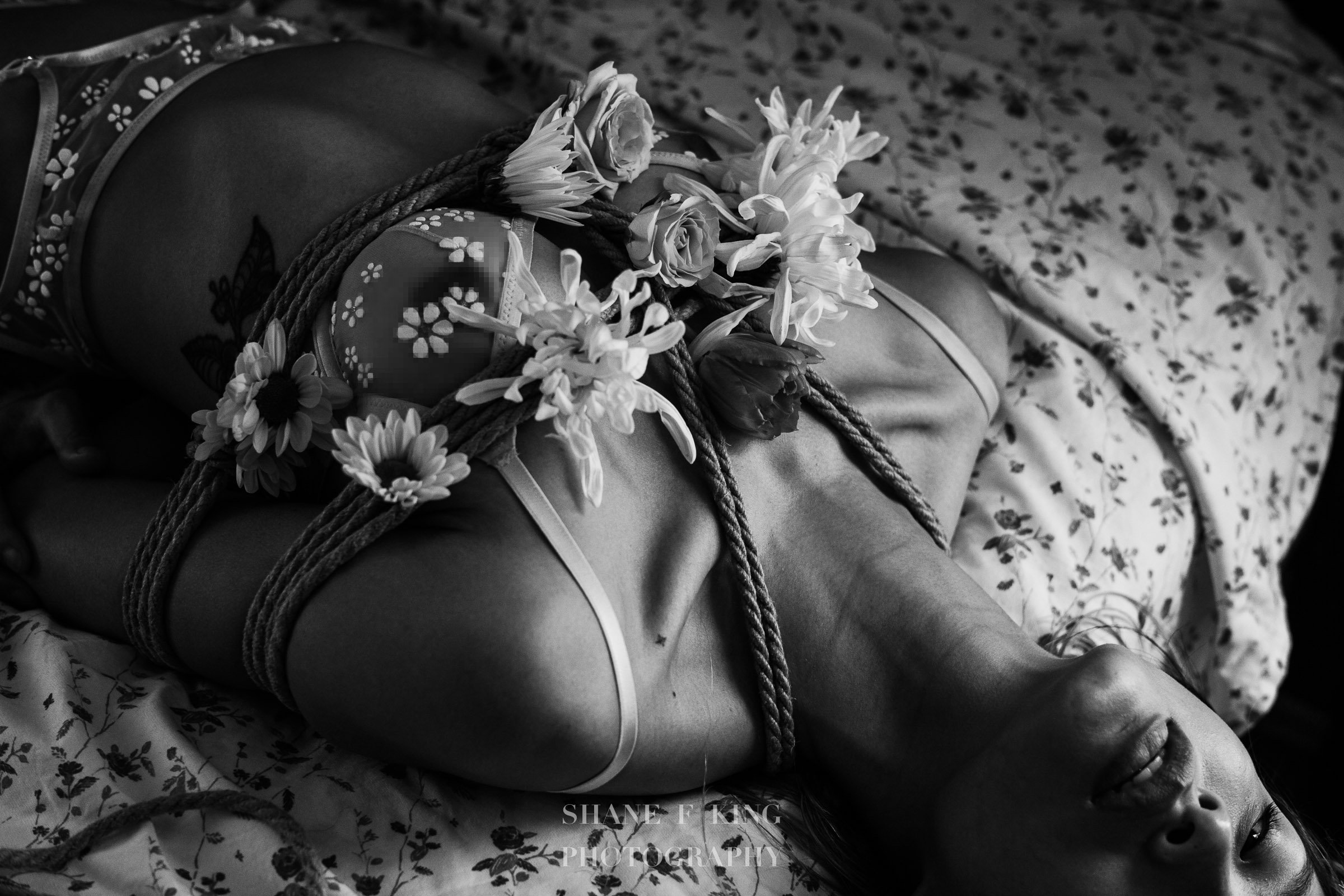What Shibari Means To Me
What does shibari mean to me? Why do I do it?
This is a question that I’ve been hesitant to approach, because for a long time I wasn’t sure. Was it the aesthetics of ornate rope patterns that highlight the human form? The fun of sharing a provocative experience with someone?
It took me over ten years of photography before I started to find my voice and figure out what it was I had been trying to say all along, and likewise shibari has taken some time. It is difficult for me to juggle the creative aspect of art-making with the analytical, because activating one often involves shutting off the other: I’ve made my best work when I don’t think about it and just focus on my intuition, wherever it may lead. Then I try to trace my steps back, and piece together what was going on in my heart that got me there.
In the case of shibari, it’s been about ten years off and on, and most of my realizations have come after I found my voice through the art of photography, and started to find parallels.
At its core, Shibari is about a connection between two people and a viewer. Much like photography, there is a communication in practice, in the act of creating a work with a subject who is participating, and then there is the communication of that work to the outside viewer.
As the one tying the ropes, my primary goal is to provide a safe and fun experience for the person being tied. I see the rope as being a form of caressing touch or embrace, more tender and reassuring than the constricting style usually found in BDSM. I want to give the viewer an impression of that feeling of being touched. Likewise, the flowers are a visual representation for the sensation of touch. I can’t photograph the electric feeling of a teasing fingertip across one’s skin, but I can show what it feels like for me.
For the person being tied, there is an experience of freedom through voluntarily relinquishing control. A core part of it for many people, and that I’ve experienced as one being tied, is of being totally seen by the other. When bound there’s nothing you can do, you have given yourself into the palm of someone else’s hand. You’re in an embarrassing position compared to how you present yourself in your normal life, and they can see it all. When you are completely exposed, there is nothing left to hide. You’re at the mercy of someone else, who has you in their care. It is a natural paradox: the control gives way to a feeling of freedom, of release. I’m not sure if it is possible to express that feeling to someone who has not experienced it firsthand, but I try to convey some sense of that.
Finally is the viewer. No photograph is complete until someone is looking at it, and with my shibari work I want to take the viewer onto a journey to some different world. Much of my work depicts a fantasy world, a place that’s all light and shadow, safe and sensual, where people can be free to express a side of themselves that is usually hidden. The rope itself becomes an element that is usual, and hopefully breaks a viewer’s expectation of what they are looking at. It’s not trashy or objectifying, it is sensual and humanistic. I want people to identify with the woman in the photograph, to feel what she feels, and my goal is to convey the feeling of being tied at least as much as I convey the feeling of seeing someone who is tied.
I can’t overstate the gratitude I have for the women who have volunteered to allow me to explore and share that space through photography and shibari. It is intensely personal, and I am grateful for the trust placed in me.
All photos in this post are from my recent floral shibari boudoir session with Tiffany at my studio in Los Angeles. To request a consultation for your own boudoir session, use the contact form at the top of the website. Thanks for reading!




